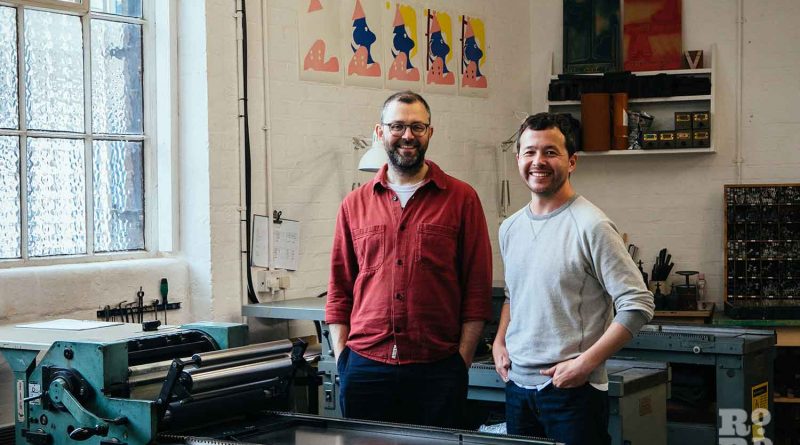Printer’s Paradise: the London Centre for Book Arts
Based in one of London’s fastest-moving tech quarters, the London Centre for Book Arts teaches us that it’s not always speed and efficiency that counts.
Dace Road sits in the centre of one of the most rapidly developing areas in all of London. Changes are so fast-moving the neighbourhood looks different from one day to the next, as new businesses open their doors and former industrial complexes give way to luxury flats.
Amid this whirling, high-speed regeneration drive, stepping into the London Centre for Book Arts (LCBA) can feel oddly anachronistic. A sedate, tranquil atmosphere reigns. It feels like stepping back in time.
Dedicated to the craft of bookmaking, the centre is full of old machines: hand-cranked proofing presses, cases of antique type, foil blocking presses, a range of specialist hand tools. Here you can do everything from printing a single poster to producing a full book, binding and all.
Run by Simon Goode and Ira Yonemura, the studio first opened its doors in 2012. Since then, Goode and Yonemura have welcomed all kinds of people into their space, from artists to hobbyists. Teacherly in an art-school kind of way, both men are warm and softly-spoken, often finishing one another’s sentences.
Open to the public and to members, all kinds of people make use of their studio. ‘It’s a bit of a sliding scale, from the cheap and cheerful to the really high-end, bespoke hand-made books,’ says Yonemura. ‘What we do is quite inaccessible so the whole idea is to pool resources and share everything so that we can all afford to do what we do,’ he says.
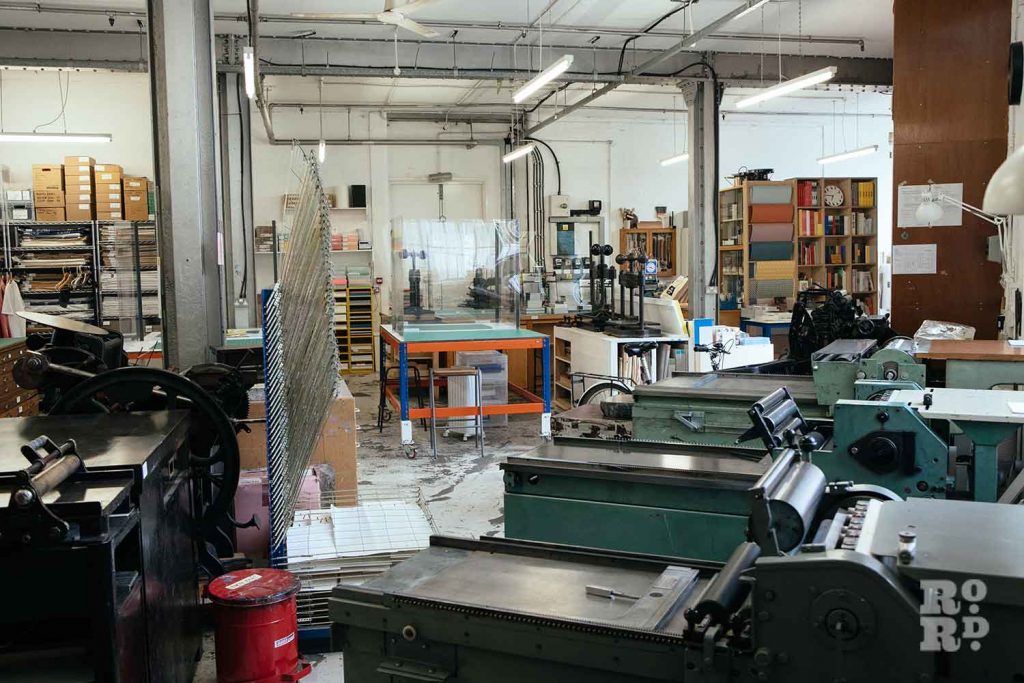
The studio is roughly divided into three main areas. In one corner you’ll find a letterpress print studio, where blocks of type are arranged, inked and then impressed onto sheets of paper by hand. In another corner you’ll find the bindery, where books are bound and the covers designed. At the back of the studio, the reprographics area is dedicated to the digital reproduction of prints using scanning and photocopying machines.
Goode and Yonemura are comfortable about incorporating digital processes into their work. ‘It’s not like we’re luddites, we use our phones and laptops as much as anyone else,’ says Yonemura. They have never had a problem with newer technologies: ‘from the beginning we recognised that there’s this thing that we all use, but we also thought that we could have this other thing at the same time. I don’t think there was a huge conflict,’ says Yonemura.
When the LCBA first opened, Goode remembers being asked a ‘prevalent and recurring question’ about the viability of the studio. The first Amazon Kindle entered the market in 2007 and by 2010 analysts were confidently predicting the demise of print books. ‘Around then people were still thinking books were a thing of the past,’ Yonemura says.
The extinction of physical books never came to pass, and today ebook sales have stabilised at around 20 per cent of book sales, while print sales make up the remaining 80 per cent. ‘We don’t really get that question anymore,’ says Yonemura with a faint smile.
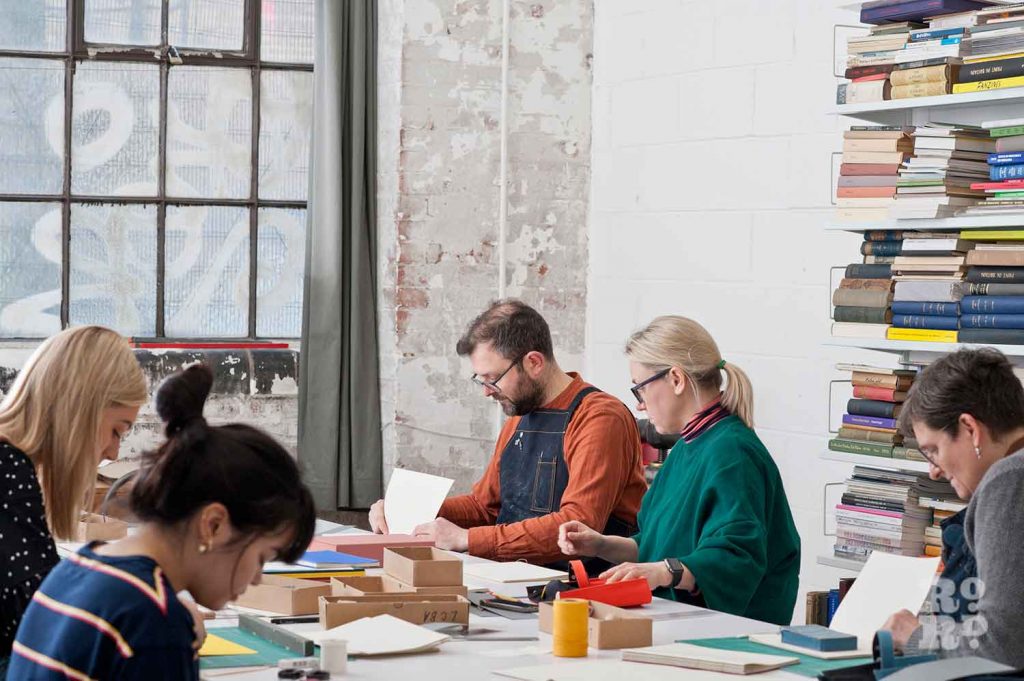
Today, the LCBA runs hugely popular bookmaking workshops open to the public. Despite their current popularity, they haven’t always felt as secure as they do today: ‘we were always worrying about the day when people would stop taking our classes,’ says Goode. But that day never came. ‘There was always a steady stream of students’, says Goode. Over the summer their five-day workshops – costing £495 – sold out almost instantly.
These workshops attract people who ‘have very different jobs during the week,’ says Yonemura. ‘We get a lot of doctors and teachers. The sort of thing where you need a release at the weekend that is completely different to what you’re doing every day,’ says Goode.
In the covid age, where most of our working lives are mediated through a screen, it makes sense that people are longing to use their hands again. ‘They want to be in touch with that part of their brain,’ Yonemura says.
Fish Island was once home to some of London’s most important industrial infrastructure. In the post-industrial era, as factories were abandoned, artists moved in, transforming these empty spaces into studios.
At one point, Hackney Wick was home to the largest concentration of artists in Europe. As is so often the case, property developers were hot on their heels, razing old buildings and replacing them with flats and co-working spaces.
In this context, the LCBA feels like one of the last vestiges of a bygone era, before the developers and ‘regeneration experts’ moved in. With whitewashed brick walls, paint-chipped concrete floors and high ceilings reinforced by steel beams, the studio still bears resemblance to the industrial unit it once was.
‘It’s not that long ago since this building was used as Percy Dalton’s peanut factory,’ says Goode.
Over the years, Goode and Yonemura have watched Hackney Wick’s old printing businesses dry up and disappear. ‘They’re gone now but there was a really big commercial printer just down the street from us. It’s now a construction site,’ Yonemura says. ‘Across the road, there used to be an ink-makers,’ adds Goode.
This ink manufacturer was called John Kidd & Co, an outfit that produced ink for Fleet Street’s press. In 2006, the old site was demolished to make way for shiny new blocks of flats. In a nod to the old ink works, ‘one building is called Ink Court now,’ says Goode.
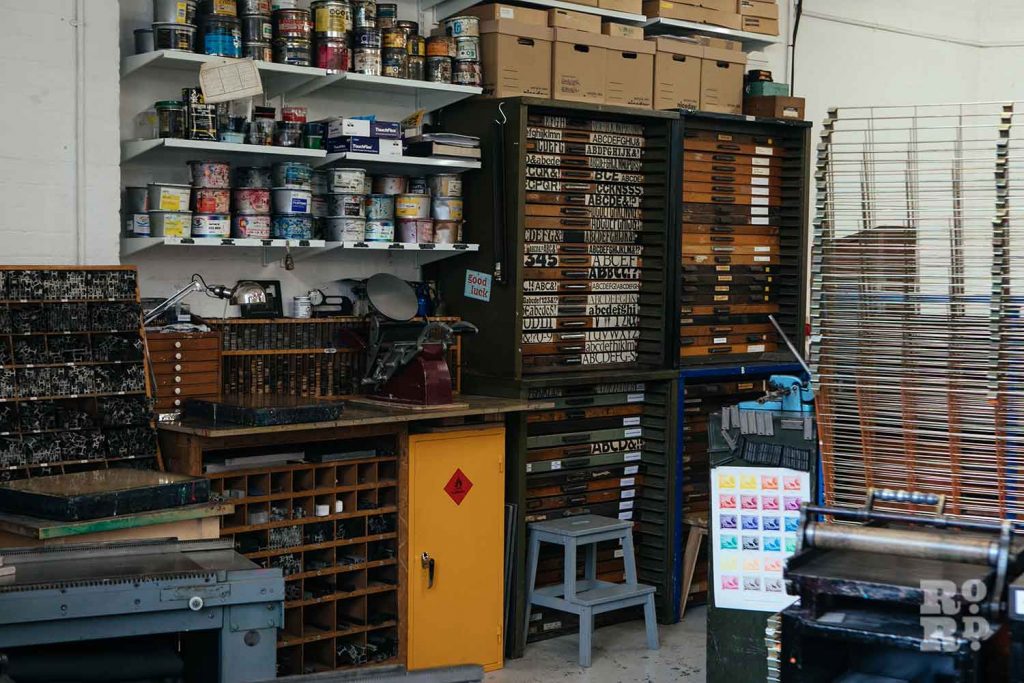
Hackney Wick used to be known as ‘printer’s paradise’, home to many printing outfits both large and small. Carpenter’s Road, which today runs through the Queen Elizabeth Olympic Park, used to have printers on every corner.
Is the LCBA keeping this tradition alive? ‘I like to think so,’ says Goode, ‘but it is different.’ Yonemura agrees: ‘the things that happen here are just so small-scale that it’s nothing compared to the kind of industry that was here before. But we like that that was here. There’s something in the air,’ he says.
‘There’s probably all sorts of stuff in the ground as well,’ quips Goode, referencing the contaminated soil left behind by the industries complexes of old.
Perhaps what is so refreshing about the LCBA is the attendant sense of calm that greets you at the studio door. Based in one of the tech capitals of the world, there’s something revolutionary about preserving a craft that many today would consider obsolete.
In a world that champions reskilling, where government adverts tell us to ‘Rethink. Reskill. Reboot,’ and we are constantly preparing for our own obsolescence, the LCBA refuses to succumb to the panic.
Modern offset printing presses can produce 120,000 pages an hour, but the LCBA teaches us that there’s value in the process – it’s not always speed and efficiency that counts.
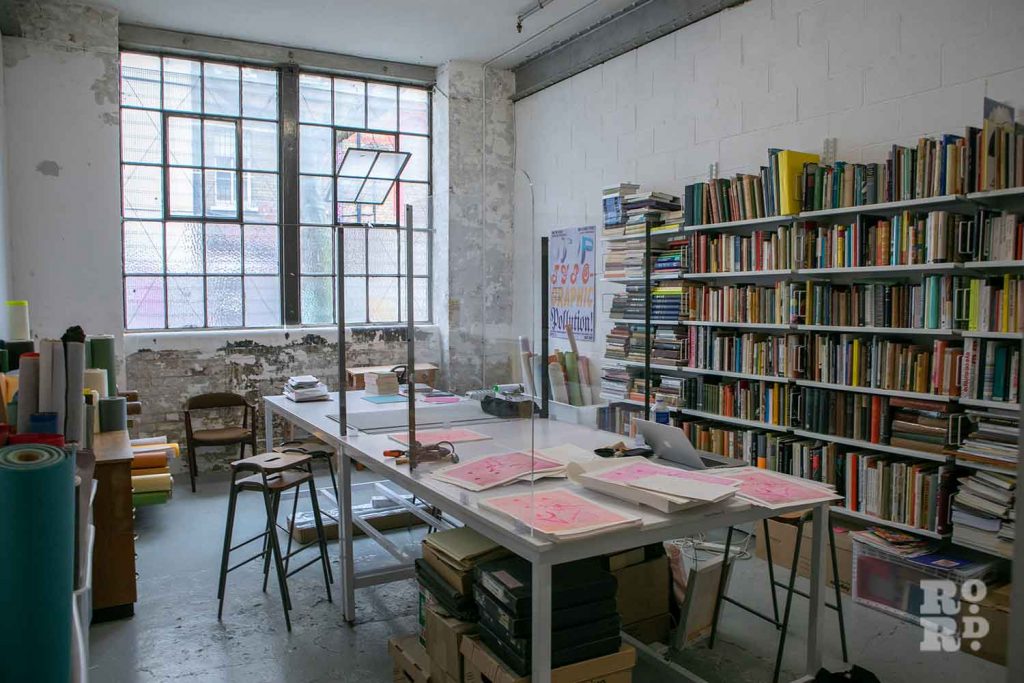
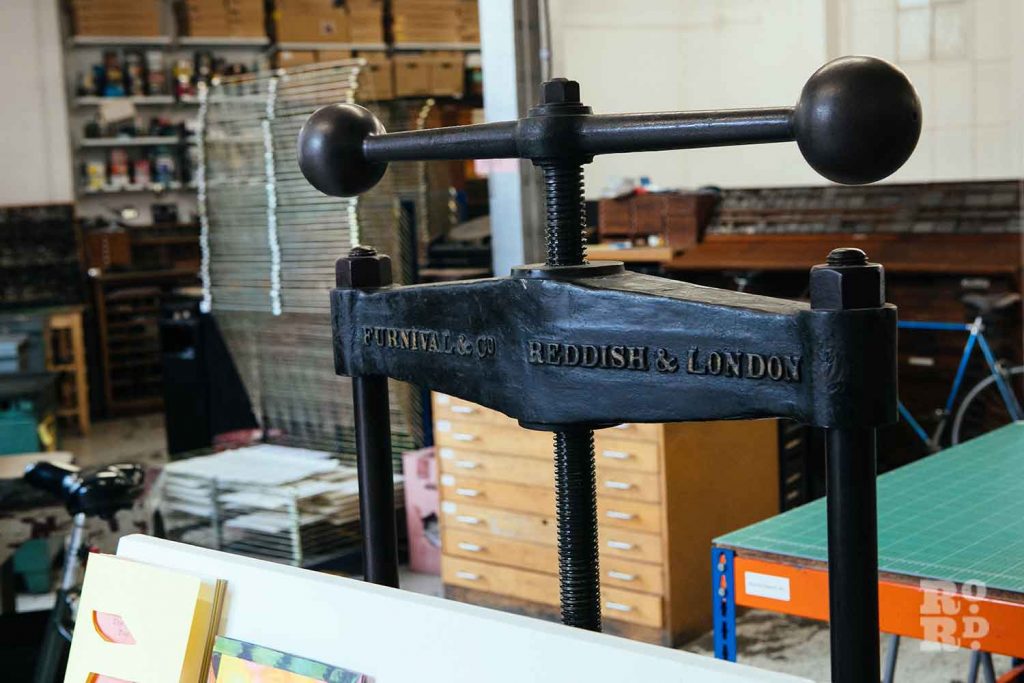
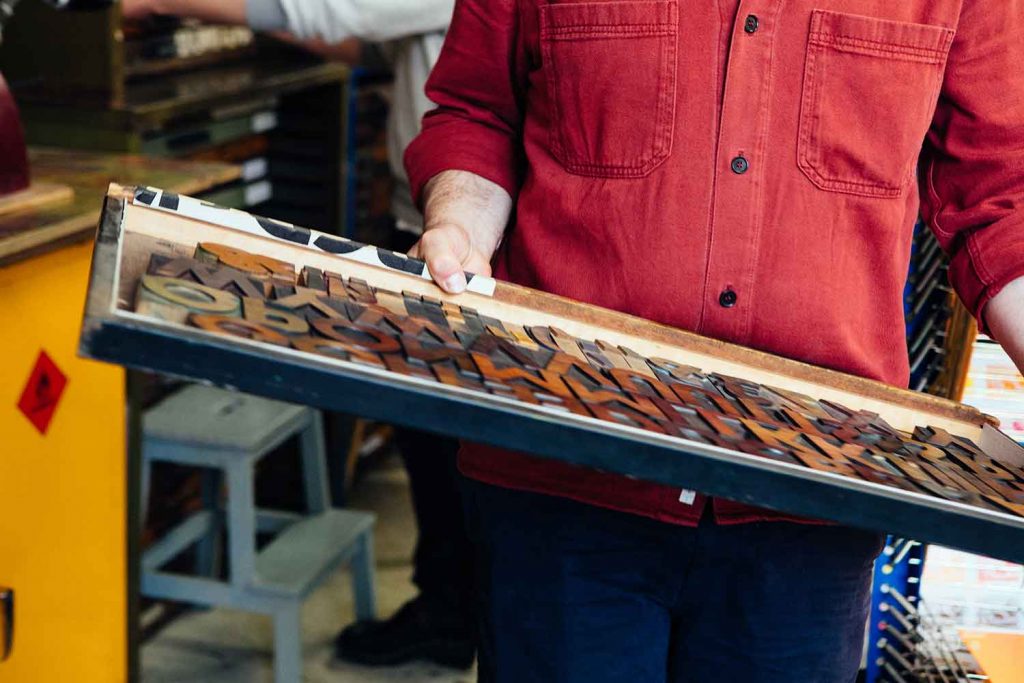
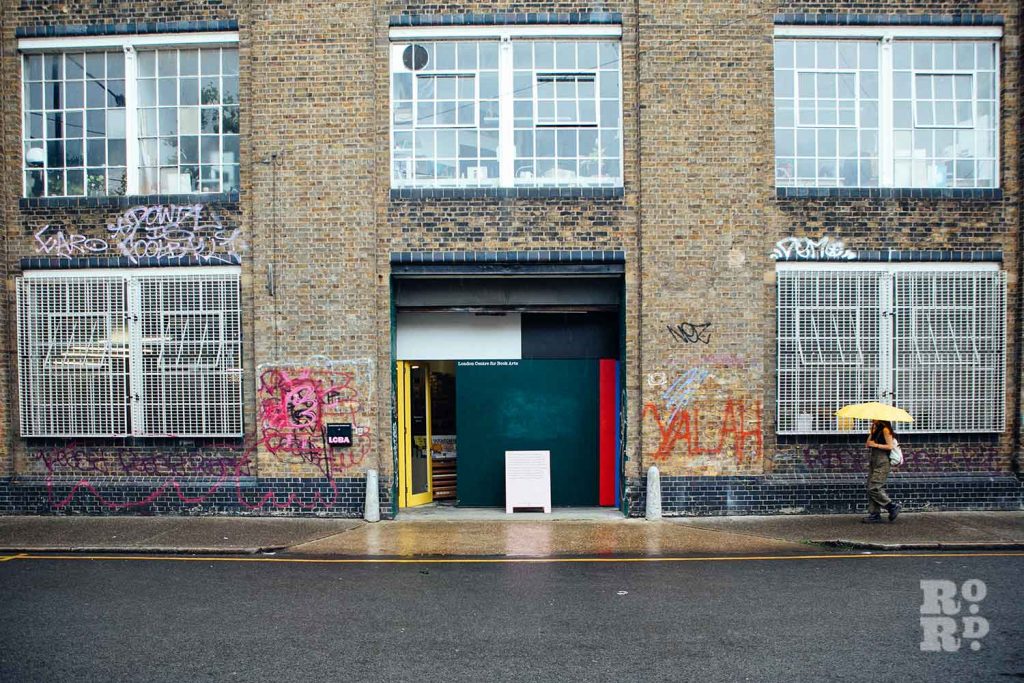
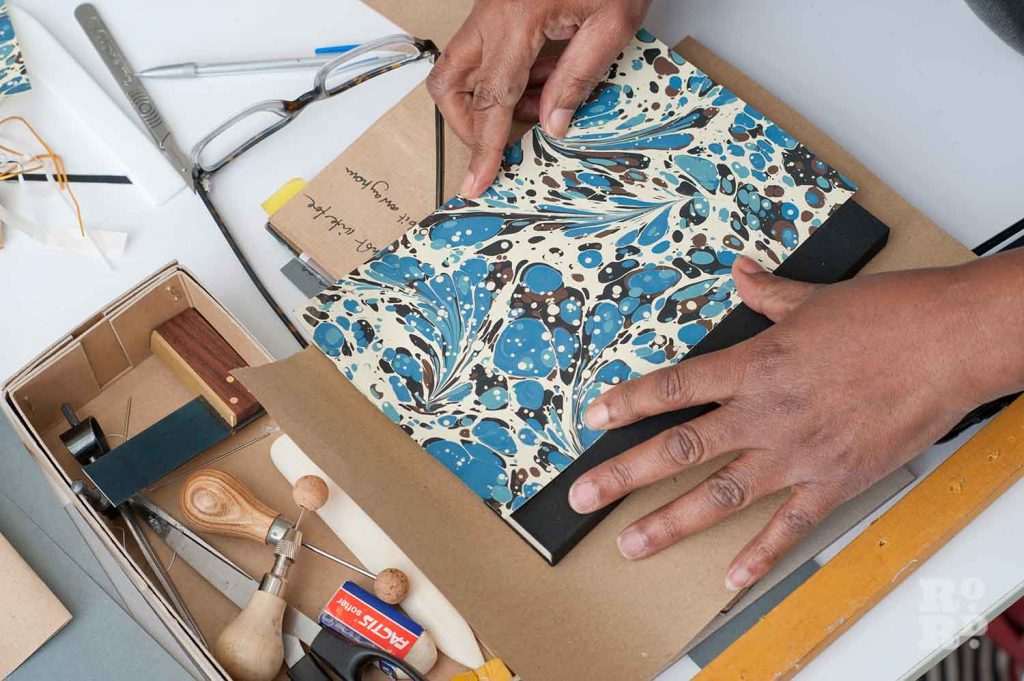
Photographs by Rose Palmer, Instagram: @roseacpalmerphotos
If you enjoyed this, take a look at our interview with zine-maker Wedgley Snipes.

